The Asus ROG Xbox Ally is an excellent handheld but far from perfect.
After gaming on it for close to two weeks, I’ve walked away generally impressed with what the Ally can do. It’s light, comfortable to hold, and plays games fairly well (with some significant caveats I’ll dig into below).
However, at $799 in Canada, the ROG Xbox Ally is in an awkward spot. Functionally, it feels more like a companion device to me, working best as an on-the-go counterpart to a more powerful, stationary gaming setup like a console or PC. But the Ally costs more than most of Microsoft’s Xbox Series X consoles in Canada, the Nintendo Switch 2 bundle with Mario Kart World, and more than most Steam Deck models. And that’s just the Xbox Ally — the Ally X is even more at $1,299.
While I haven’t thoroughly tested the Ally X myself — MobileSyrup gaming editor Brad Shankar had that privilege — I have tried both handhelds. If you have the money for either the Xbox Ally or Ally X, I don’t think you can go wrong with either option. But those who might only be able to afford one gaming device should skip the ROG Xbox handhelds for now because, frankly, they’re not the best value option.
Specs
- Display: 7-inch FHD (1920×1080) IPS Gorilla Glass Victus 120Hz AMD FreeSync Premium touch display
- Processor: AMD Ryzen Z2 A
- Memory: 16GB LPDDR5
- Storage: 512GB SSD
- Dimensions: 29.0 x 12.1 x 2.75 ~ 5.09 cm
- Weight: 670g
- Operating System: Windows 11
- Battery: 60Wh
- Connectivity: Wi-Fi 6E, Bluetooth 5.2
- Sensors: Fingerprint reader
- Ports: 2x USB 3.2 Gen 2 Type-C, 1x 3.5mm audio jack, 1x UHS-II microSD card reader.
- Graphics: AMD Radeon Graphics
Easy on the eyes, and wrists!
Note the dinky cardboard kickstand that came in the box, handy in a pinch.
The hardware is one of the standout features of the Xbox Ally series, and aside from the software improvements I’ll talk about below, one of the best arguments for buying the Xbox Ally over anything else.
Compared to the previous Republic of Gamers (ROG) Ally devices and other handhelds I’ve tried, the ROG Xbox Ally is extremely comfortable. I’ve preferred Xbox-style controllers since the 360 days, and Asus did an excellent job melding that comfort into the handheld. I haven’t spent enough time with a Steam Deck to really compare the feel, but I would say the Xbox Ally is leagues ahead of the Switch and Switch 2, as well as the 2024 Lenovo Legion Go.
But it’s more than just the feel. The Xbox Ally is quite light, weighing just 670g. Coming from the Legion Go’s hefty 854g, the Xbox Ally is like a feather. I had no problem gaming on the Xbox Ally for hours at a time, while the Legion Go had my wrists cramping up in minutes. I used the Legion Go’s built-in kickstand constantly, but I barely missed it on the Xbox Ally. (I will say it’d be nice to have a kickstand, especially if you plan to dock the Ally with a larger screen — Asus included a cardboard kickstand in the box, which works in a pinch, but isn’t great. You can also get an actual dock from Asus, though it costs $150 in Canada.)
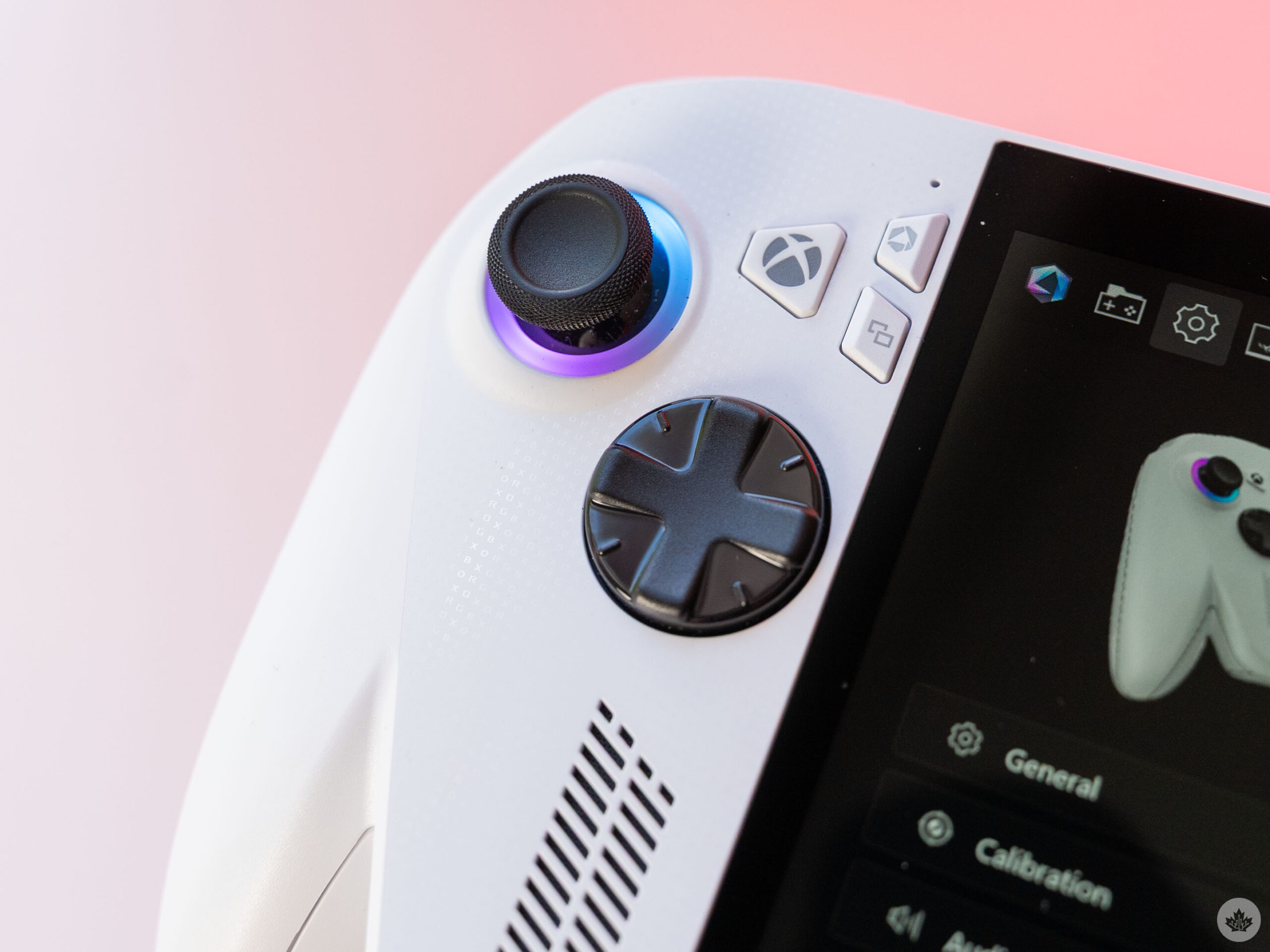
The inputs are also generally good, though there is room for improvement. The bumper and trigger buttons are excellent and comfy, while the sticks are well-positioned and smooth. There are RGB light rings around the sticks, but these can be turned off. Unfortunately, I’ve already noticed the left stick shedding flecks of black plastic, which is particularly annoying on the white handheld and raises concerns over longevity and stick drift.
The Xbox Ally sports an assortment of buttons for easy access to various parts of the user interface (UI), like an Xbox button for the Xbox software, a button for Asus’ Armoury Crate SE software, and a handy dedicated game library button. It sports extra buttons on the rear that can be remapped using the aforementioned Armoury Crate software, though I wish these were a bit closer to where my fingers rest. The face buttons now sport the classic Xbox colours, but they feel a bit sloppy and are quite loud, which can be annoying for anyone around me while I game.
Finally, I have to note that the Xbox Ally power button doubles as a fingerprint scanner, which is a far greater quality of life improvement than I expected. On the Legion Go, I had tons of issues unlocking the handheld because of the buggy Windows lockscreen. While Microsoft has improved the lockscreen experience for handhelds, the Xbox Ally’s fingerprint scanner allows you to bypass the lockscreen with a tap of your finger, getting you to your games faster. Now, if only Microsoft could fix the buggy sleep state so that the Ally would stay asleep when I hit the power button…
Cool and capable
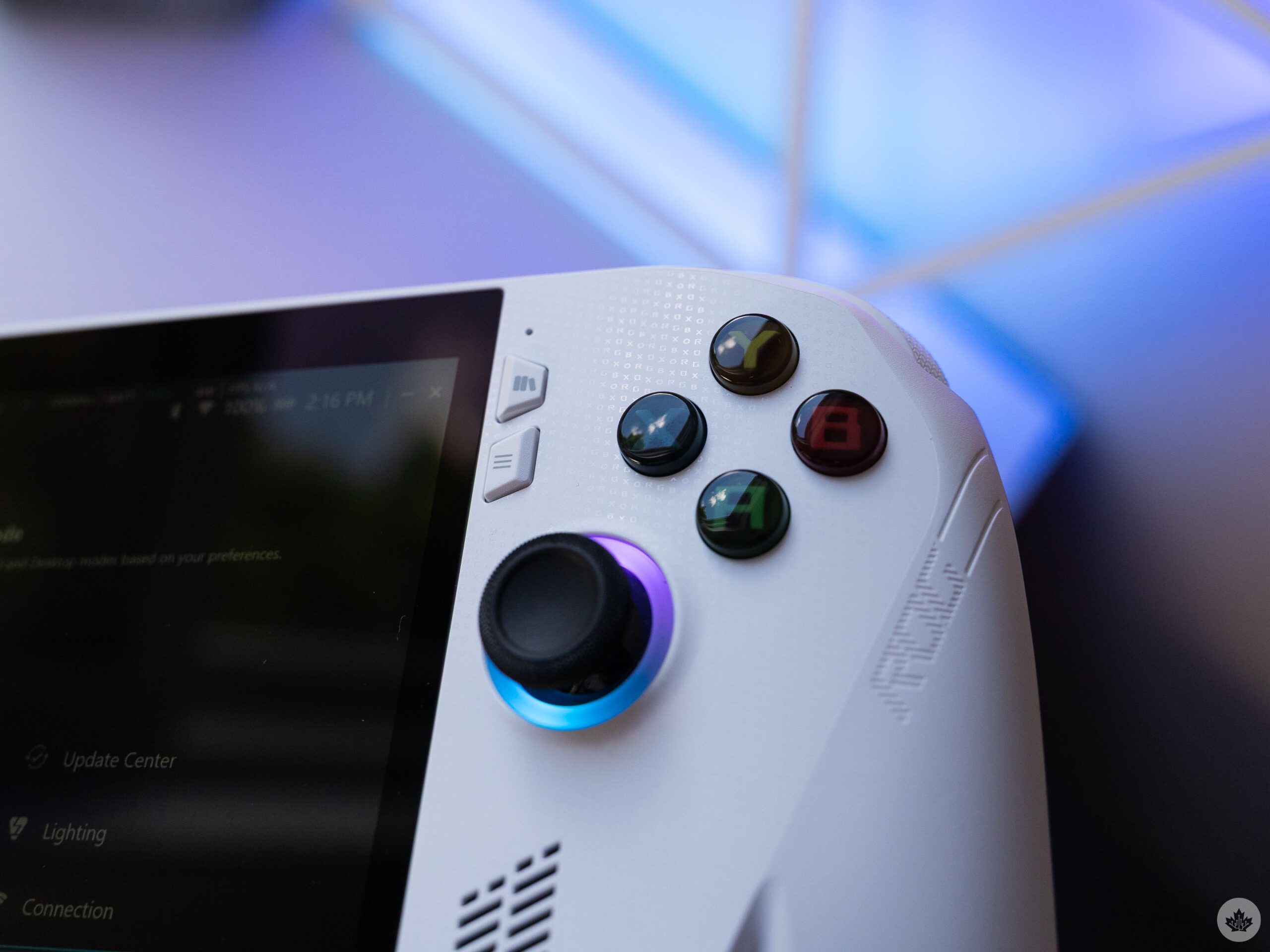
In the right light, you can see an ‘ROG XBOX’ pattern on the device.
Also of note is the temperature. Even after lengthy gaming sessions pushing the hardware to its absolute limit and the CPU temps hitting 70 to 80 degrees, I was surprised that the Xbox Ally never felt hot. At worst, it got a tad warm, but I could only feel the warmth on the display or around the air vents on the top edge of the handheld. This is a pretty stark contrast from the Legion Go, which got so hot it was uncomfortable to touch, especially when playing more demanding titles.
There are a few factors here. I think Asus did a fantastic job with the cooling system on the Xbox Ally. But the new chip is also an improvement. The Xbox Ally sports AMD’s Ryzen Z2 A chip, which is less powerful than the Z2 Extreme featured in the Xbox Ally X but is a little ahead of the Z1 Extreme used in the Legion Go and last year’s ROG Ally X. Asus says the Xbox Ally X in silent mode (which reduces power draw to lower cooling) gets similar performance to the original Ally X in performance mode. While the company didn’t offer a similar comparison for the Xbox Ally and original Ally, in my testing, the performance seems to be about par to the Z1 Extreme in my Lenovo Legion Go.
The biggest factor in performance is how demanding the game is. The latest triple-A titles will likely struggle, but indie games and older titles will probably run quite well. However, your standards as a gamer will largely determine what’s “playable” on the Xbox Ally. Coming from my desktop gaming PC, where I’ve played at 1440p with 120fps for years, often with graphics settings cranked to the maximum, the Xbox Ally’s 1080p screen and graphical limitations certainly feel like a step down.
That said, at the 7-inch screen size, 1080p still looks really good. Hell, even 720p looks fine if you need to drop the resolution to make some games run a bit better (and you will, depending on what you play). Framerates, however, are more of a toss-up. You can definitely enjoy up to 120fps in some titles, but I also found myself having to rock 60fps or even 30fps in some games.
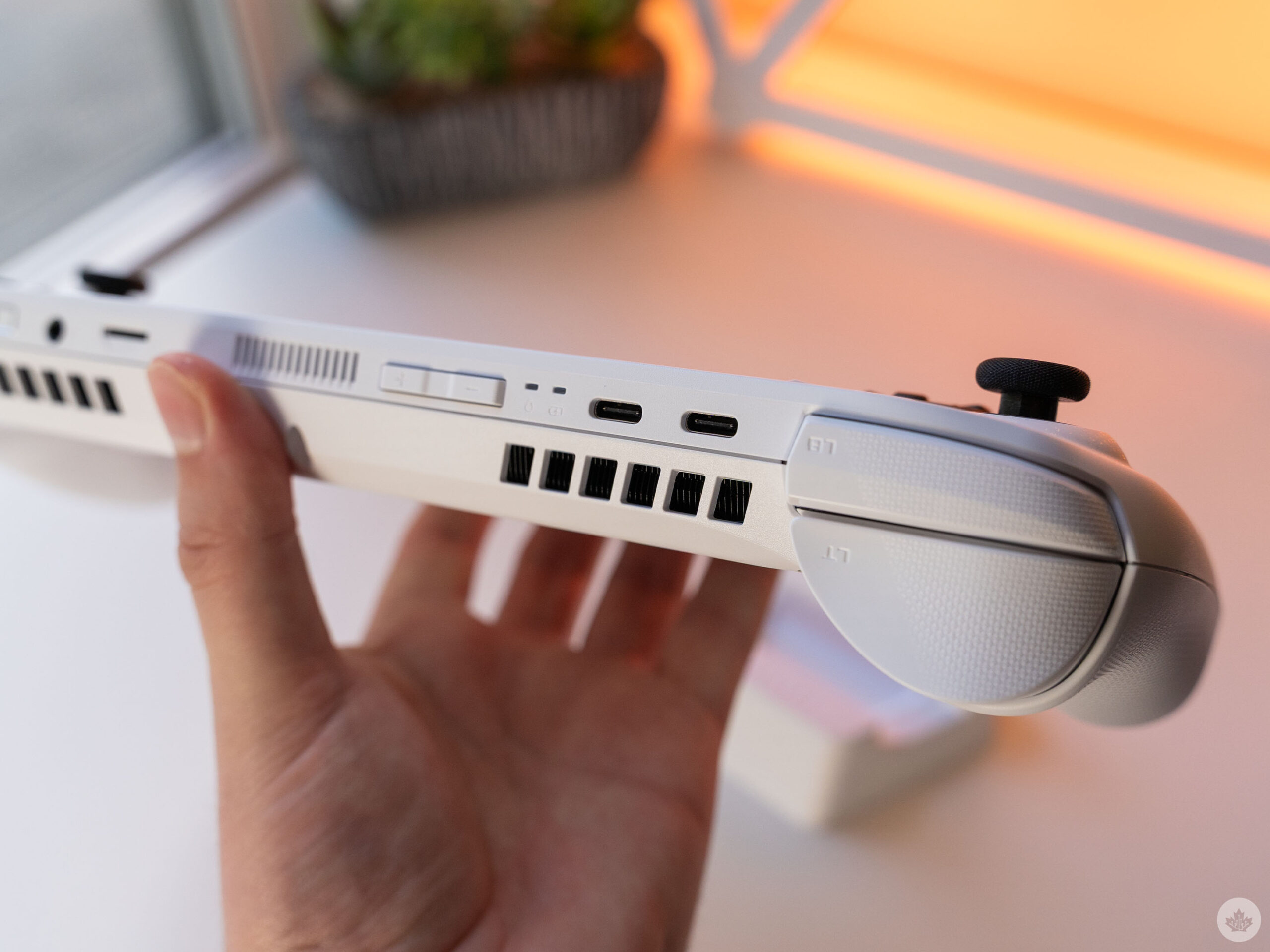
With less demanding titles, like Sworn, Hades, and Stardew Valley, 1080p worked great. Stardew runs great on basically everything, though, and hardly requires high framerates to be enjoyable — I tend to just cap it at 60 for smooth gameplay that won’t kill my battery life. Hades, on the other hand, ran at rock solid 1080p/120fps while on battery power — an important distinction, as you can squeeze a little extra performance out of the Xbox Ally while it’s plugged in. (I haven’t tried Hades II because I only just got around to playing Hades on the Xbox Ally, but Brad Shankar notes it also ran great on the Switch 2, which is obviously less powerful than the Ally X.)
Sworn required a little more oomph. I was able to get fairly consistent 1080p/60fps gameplay while on battery, and plugging in boosted my frames slightly to around 70 on average. If I dialled it down to 720p, I was able to get closer to 80fps.
Canadian-made Warframe ran quite well at 1080p, averaging around 120fps for super smooth gameplay. That said, I had to set the graphics to low to achieve this — if I bumped up to medium, framerates tanked to the mid-30s and the game was extremely stuttery. Even at low settings, the game looked great on the Xbox Ally.
However, that’s about where the good performance ended. I tried Oblivion Remastered and the Xbox Ally struggled to hit a consistent 30fps even at 720p on the lowest settings and with turbo mode turned on. In fact, the game would crash on the loading screen if I tried to launch it with anything higher than low settings. This was one of the only games where the Xbox Ally performed worse than the Legion Go — that handheld was able to maintain a more consistent 30fps in Oblivion on low settings. Frustratingly, the Xbox app says that Oblivion may have some compatibility issues but otherwise should “perform great” on the Xbox Ally.
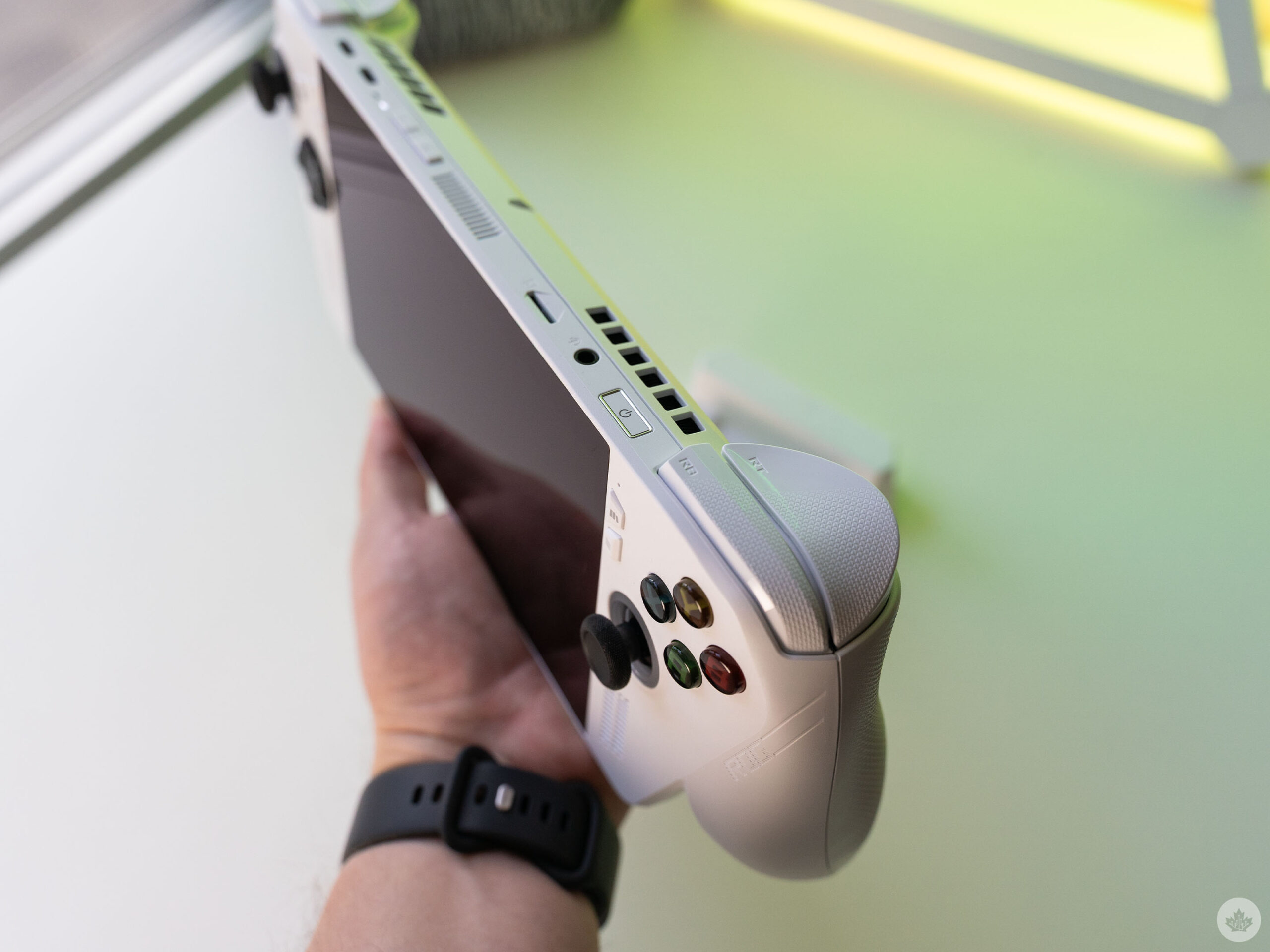
Doom: The Dark Ages managed a consistent 30fps at low settings and 720p on the Xbox Ally, but 1080p dropped it to the mid-20s. But for a fast-paced, first-person shooter like this, I’d argue 30fps isn’t playable. Again, the Xbox app indicates the game will run great on the Xbox Ally.
Finally, I tried my current favourite game, Path of Exile 2. This was an interesting test because I don’t have the game on a launcher like Steam and instead needed to install the game’s own launcher (it is also available on Steam, I just don’t have that version). Once installed, the Xbox app didn’t detect the game and add it to my library, and I haven’t found a way to manually add it, which meant I had to switch to desktop mode to access the title. I did eventually find a way to add PoE2 to the Armoury Crate launcher, which I can access without swapping to the desktop mode, but it’s still an extra process.
Launcher issues aside, I managed to get the game running at a fairly consistent 30fps once I turned down all the settings as low as they could go. I also had to make use of AMD’s FSR upscaling tech — this is the only game where I used it, and also the only game where I found it didn’t look awful while in use. PoE2 was playable at both 1080p and 720p, though 1080 was a little stuttery. Unfortunately, PoE2‘s endgame is more demanding because the monster density increases significantly, so I found the Xbox Ally was only really viable during the campaign. Given PoE2 is in early access and has some significant optimization issues even on beefy gaming PCs, I’m happy that it ran as smoothly as it did on the Ally — I just wish it ran better, because I really enjoyed being able to play the game on the go.
Battery life is quite variable on the Xbox Ally, and it ultimately comes down to how demanding the title is and how hard you want to push the system. For example, I was able to get six to seven hours of playtime in Sworn at 720p/60fps, while more intense games like PoE2 at 720/30fps killed the battery in half that time.
About that Xbox experience…
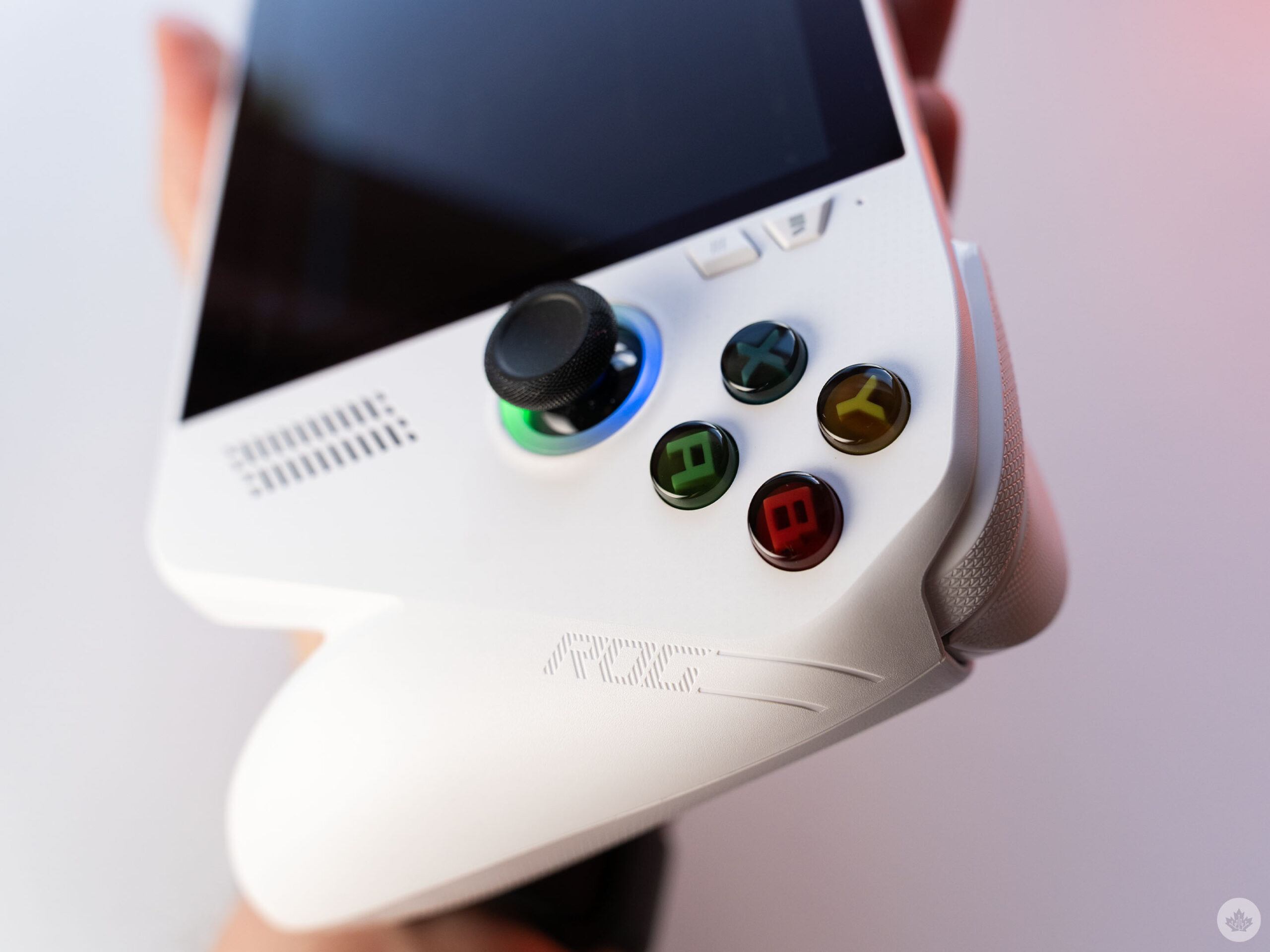
The other standout feature of the Xbox Ally and Ally X is the Xbox software experience, which aims to deliver a console-like pick-up-and-play experience on a handheld powered by Windows 11. It’s a major upgrade and a significant step toward making Windows-powered gaming handhelds better, but also needs a lot more work.
However, I must note that most of my testing involved pre-release software, such as preview versions of the Windows Xbox app. It’s possible some of my complaints will be addressed on day one or with future software patches. Moreover, while the experience was generally good, it was also pretty buggy at times. I won’t be too critical of bugs — again, pre-release software — but hopefully these issues won’t be present for most consumers.
So with that in mind, let’s get into it. The good news is that the Xbox experience is a major step up over the previous software experience, which was basically just using Windows 11 without a keyboard or mouse and on a screen far smaller than what Windows was designed to work on. On the Xbox Ally, you can mostly avoid using Windows 11, though not entirely. After the initial Windows 11 setup process (which has been updated to work with gamepads now), when you boot up the handheld, it’ll launch straight into the Xbox full-screen experience, which is essentially just the Xbox app but, well, full-screen.
There is a little bit more going on here, though — for one, you can navigate the Xbox app with a gamepad (except when it bugs out), and the UI is fairly similar to what you’d get on a console. Moreover, there’s some under-the-hood stuff going on that reduces non-essential background tasks when using the full-screen experience. You can easily switch to a typical Windows desktop experience if (or when) you need to, though the handheld warns there might be some performance degradation. For what it’s worth, I haven’t noticed any issues while playing games this way, but it’s worth keeping in mind.
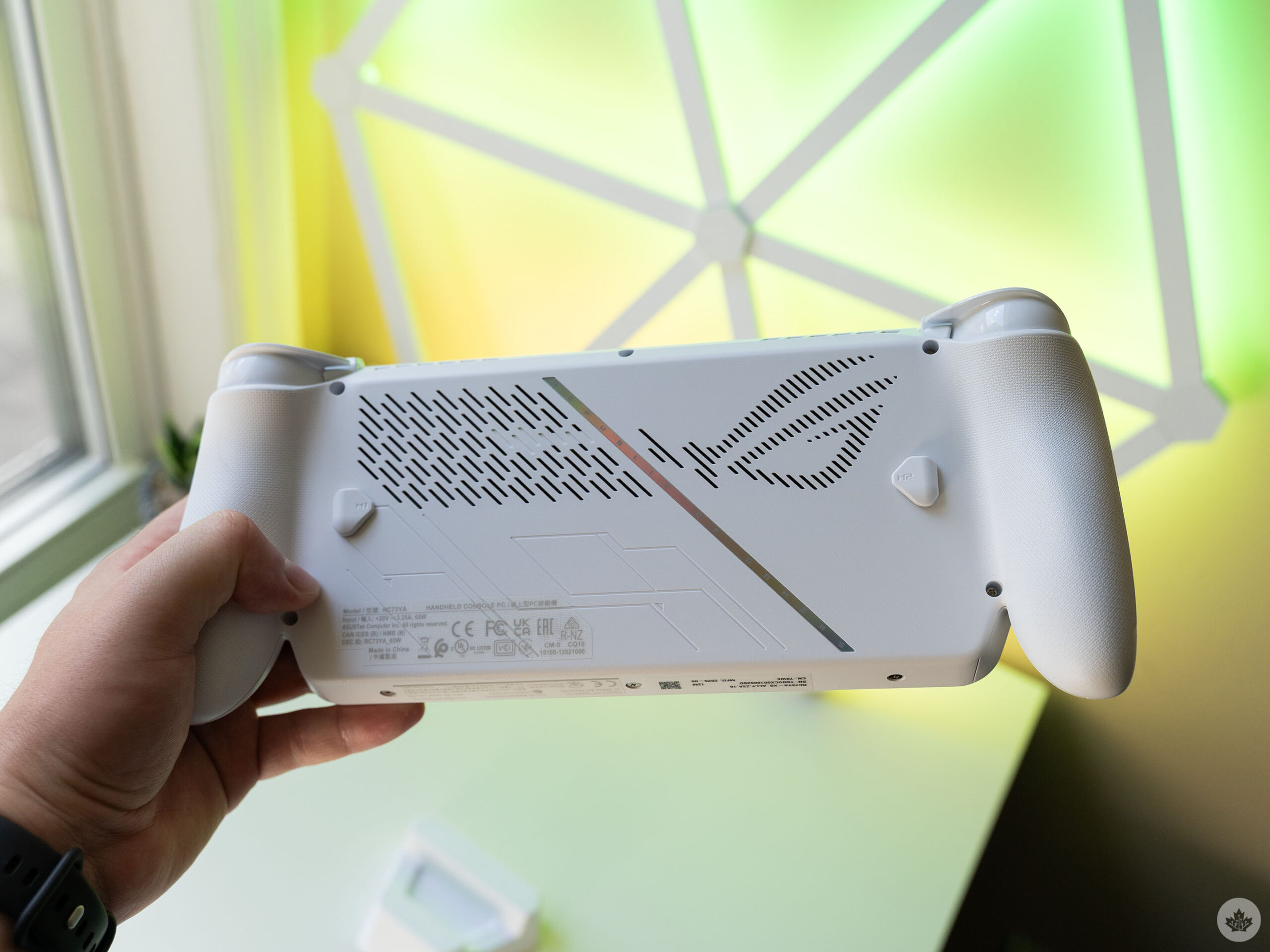
The bad news is that Windows 11 isn’t entirely avoidable. It’s hard to say how much you’ll need to interact with it though. Again, because I had to deal with pre-release software, I had to perform a litany of updates and software tweaks on the device just to get the Xbox experience working. Asus claims this won’t be the experience for most consumers, and I hope that’s the case. Beyond getting all the software updated, I also occasionally had to jump into Windows 11 to access certain games and software that I couldn’t use via the Xbox experience.
The Xbox app, naturally, gives you access to all your Xbox games and Game Pass, but it has also been updated to connect to various other game stores like Steam, Epic Games, and more. Once you’ve installed and signed in to your game stores, any games you download will appear in the Xbox app’s game library for quick access. For people like me who have built up a vast library of games across multiple stores, this is an amazing improvement over the previous handheld experience.
However, it’s not perfect. At the time of writing, there’s no easy way to manage updates, both for games and for the handheld as a whole. For games, I occasionally need to hop into a title’s respective launcher — e.g., for the games I have on Steam, I need to launch Steam to install updates. The Xbox Ally relies on various software pieces to bring the whole experience together, many of which are updated from different parts of the OS; Windows Update for Windows, the Microsoft Store for Xbox and other apps, Armoury Crate for drivers and other software. It’s all a bit convoluted. Here’s hoping Microsoft and Asus can figure out a better update solution down the line.
More importantly, it’s worth remembering that you don’t need to buy an Xbox Ally or Ally X to get this special software experience. Parts of it, like the ability to pull games from other launchers into the Xbox app, are already accessible on Windows. And since the Xbox full-screen experience is just part of the Xbox app that ships on all Windows PCs and handhelds. In other words, you’ll likely soon be able to access it on other handhelds, which means it’s not really a selling point for the Xbox Ally.
Should you buy it?
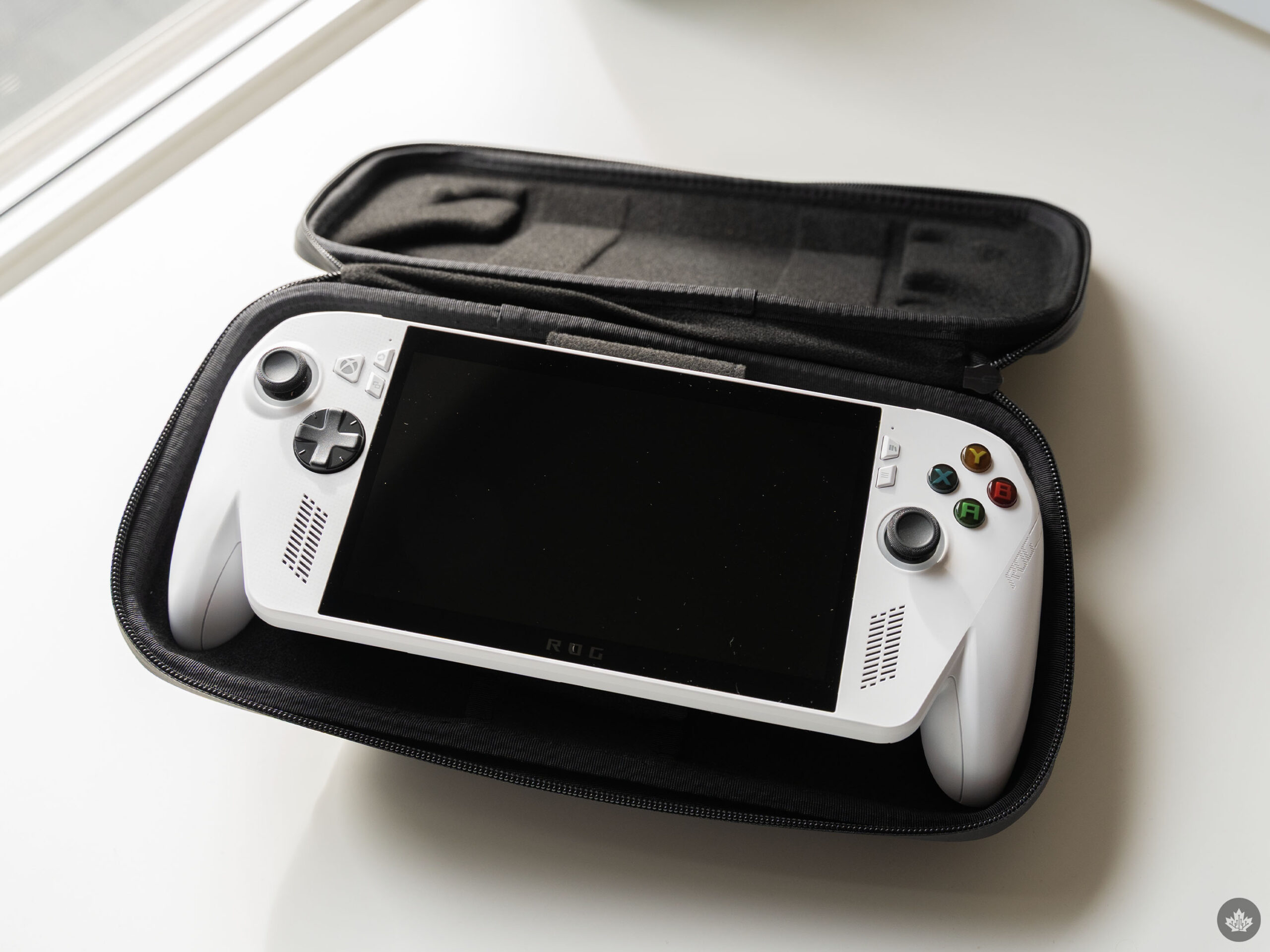
Overall, I really like the Xbox Ally. The hardware is very good, it’s extremely comfortable even in longer playing sessions, and the battery life is decent (depending on what games you play). However, some of what makes the Xbox Ally special won’t be exclusive forever. Other handhelds will likely ship with AMD’s solid Ryzen Z2 A chip, and the Xbox software experience should eventually come to all handhelds and PCs.
The ultimate question, of course, is whether you should buy the Xbox Ally. At $799, it’s a steep price, especially for a product that frankly doesn’t do anything unique. There are a ton of solutions for portable gaming, including other handhelds that cost less (the Steam Deck and, laughably, the also very expensive Switch 2). The Xbox Ally and Ally X are just the current best Windows-powered handhelds.
If you’ve got a smartphone, there are tons of free apps that allow you to stream games running on a PC or console so you can play them on your phone, on the go. Granted, this is dependent on having a decent internet connection, but in my experience, it works well enough most of the time. Plus, buying a controller to use with your phone is a lot cheaper than an Xbox Ally. And that’s not even getting into the cloud streaming options.
The main benefit of handhelds like the Xbox Ally is that they run games locally, which means you can effectively play anywhere, regardless of internet connection. That’s a big plus, but it comes with some downsides — running games locally requires a lot of power, especially for demanding titles, and the Xbox Ally can’t always keep up. The Xbox Ally X is better in this regard, but it’s even more expensive.
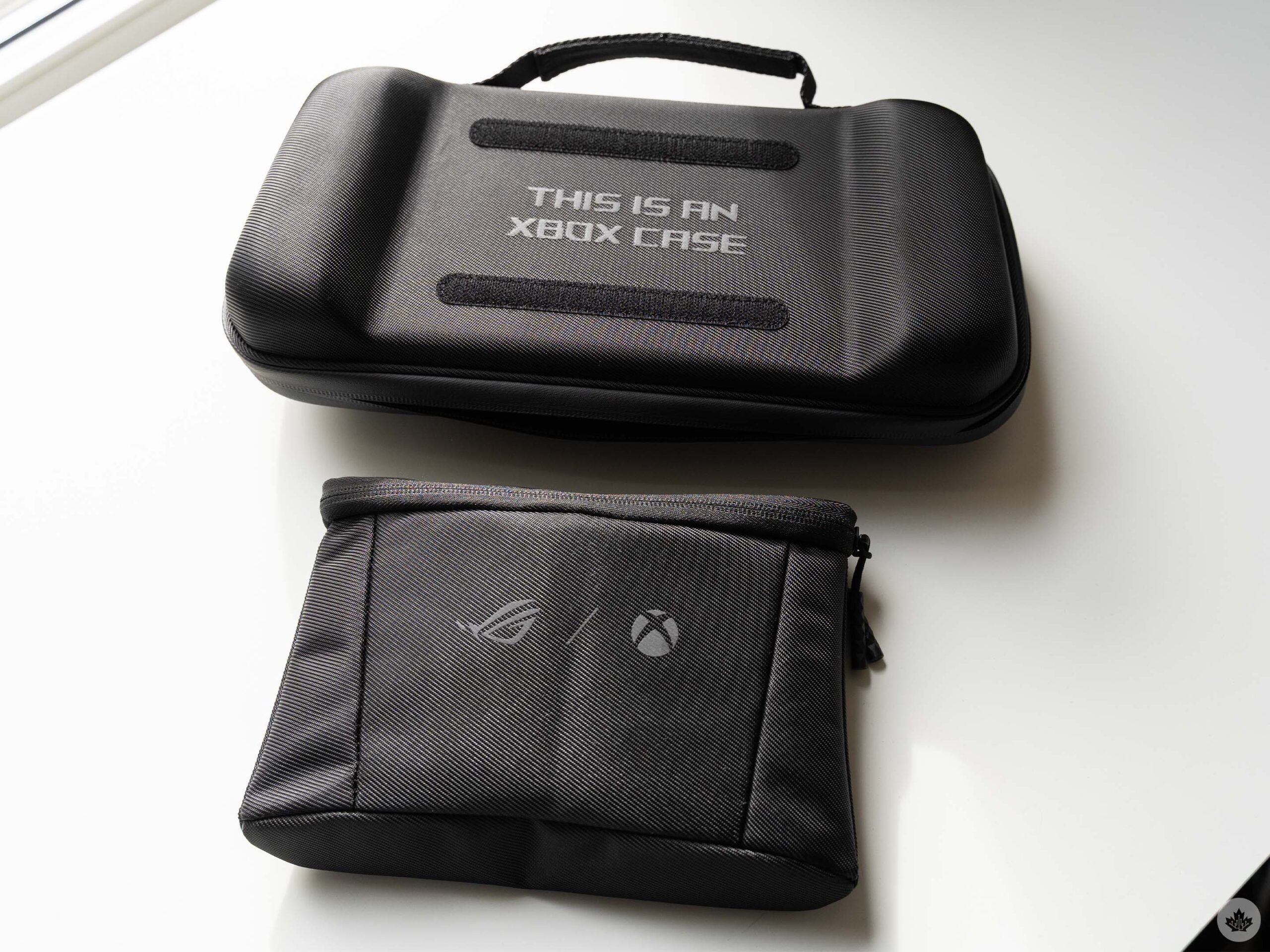
The carrying case has a removable storage pouch.
So, here’s my recommendation breakdown for the Xbox Ally. It’s a worthwhile purchase for anyone who:
- Does not already own another handheld.
- Has a vast library of PC and/or Xbox titles.
- Wants to use Game Pass (which is only available on Windows handhelds).
- Enjoys playing games that aren’t demanding and/or doesn’t mind playing at 720p/30fps.
- Frequently travels and is often without reliable internet (e.g. on planes or in hotels).
If most of the above apply to you, I think you’ll really enjoy the Xbox Ally. And if you’re someone who wants better performance and you’ve got the money for it, making the jump to the Xbox Ally X will help. That said, at $1,300 for the Ally X, you’re verging into gaming laptop territory. At that point, it might make more sense to buy a gaming laptop and trade some of the portability of the handheld form factor for a significant boost in performance.
The Asus ROG Xbox Ally is now available for pre-order ahead of an October 16 release. In Canada, it’s available from the following retailers:
Additionally, read our full Xbox Ally X review for more details on Asus’ other new handheld.
MobileSyrup may earn a commission from purchases made via our links, which helps fund the journalism we provide free on our website. These links do not influence our editorial content. Support us here.
mobilesyrup.com (Article Sourced Website)
#ROG #Xbox #Ally #Canadian #review #Great #handheld #costs
